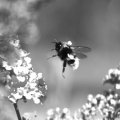University of Queensland researchers have guided the United Nations World Health Organisation (WHO) development of international standards on the health effects of copper.
The University's National Research Centre for Environmental Toxicology developed guidelines on the health consequences of copper exposure following an international workshop on the subject convened by WHO officials in Brisbane in June 1996.
Due to be published later this year as part of WHO's International Program in Chemical Safety, the guidelines will be accessed by governments throughout the world. The Centre is Australia's official participating organisation in the program and will host the WHO international symposia for the development of guidelines for arsenic exposure in 1998.
According to Director Professor Michael Moore, the Centre was chosen to develop the standards because of its overall expertise in the health effects of metals including copper, zinc, lead, arsenic and aluminium.
Professor Moore said the Centre had a research team led by senior research fellow Dr Charles Dameron conducting a major Australian Research Council-funded study into a protein which appeared to act as part of a natural detoxifying system for excess copper and is critical to its normal use by the body.
Dr Dameron's program is a collaborative project with researchers at the Murdoch Institute, the University of Melbourne and Griffith University.
'The copper study represented the first time WHO had addressed the joint essentiality and toxicity of a metal,' Professor Moore said.
He said aside from the obvious benefits of having international guidelines for copper, the study also brought scientific balance to recent concerns about copper in the environment.
'False information circulating about metals can do serious damage to regulatory agencies, health care professionals and mining companies. Our study provides perspective, preserving the importance of metals such as copper and zinc to the health of Australians and the Australian economy,' he said.
The environmental health criteria developed by Centre researchers will also be published by the South Australian Health Commission in time for the environmental health officers forum of Australian states and territories later this year.
He said the guidelines developed by Centre staff for the first time established a safe minimum level of copper in humans (20 micrograms per kilogram per day) and documented poisoning cases at levels of greater than 25 milligrams per day.
'It is difficult to set an exact level at which poisoning occurs as this varies between individuals,' he said.
Ingested mainly from food and water, copper is an essential element for humans, needed by the heart and other organs for efficient energy use. Copper deficiencies can lead to cardiovascular (especially arrhythmias), skin and neurological problems. Because of dietary interactions, people taking excessive zinc and vitamin C supplements are at risk of developing copper deficiency.
It was believed many people, especially low birth-weight children, living in Western societies had sub-optimal copper intake because of purified diets, Professor Moore said.
'Incidental copper can also enter the human body through some medications such as IUCDs (intrauterine contraceptive devices), swimming pool algicides and even via the skin from wearing copper bracelets. Generally copper is best obtained through a normal balanced diet,' he said.
'It is also present in wine because of the copper-based fungicide used by the Australian wine industry to destroy fungi on grape vines.'
However, in large doses, copper could be highly toxic with the world first alerted to its potential following a well-publicised United States case many years ago when a group of nurses fell ill after drinking cocktails mixed in a large copper cocktail shaker, he said.
Established in 1991, the Centre is jointly funded and managed by the University of Queensland, the National Health and Medical Research Council, Queensland Health and Griffith University.
Research is the main purpose of the Centre and information and consultancy services are provided. Professor Moore said the Centre offered a co-ordinated approach to problems of environmental toxicology in Australia as they affected humans and animals.
For more information about the Centre, its mission and research areas, please contact Professor Moore (telephone 3274 9009 or m.moore@mailbox.uq.oz.au).



